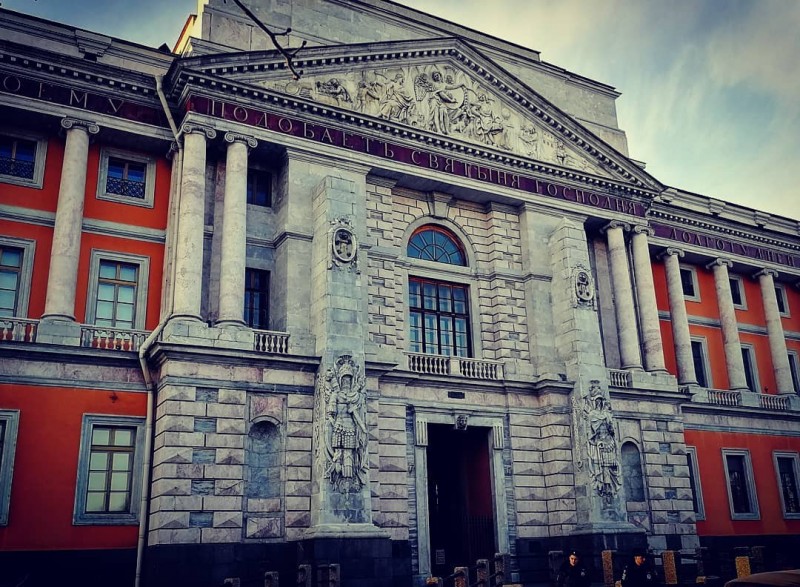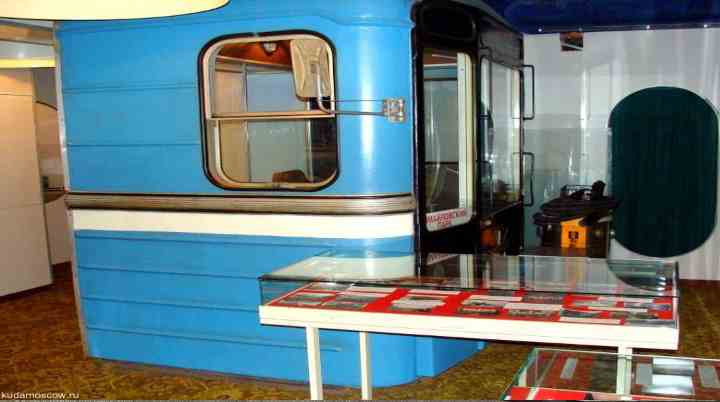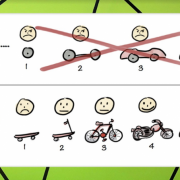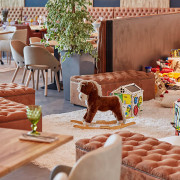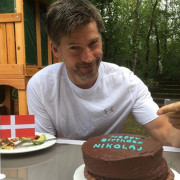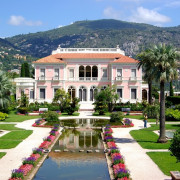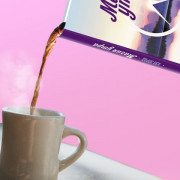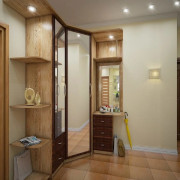Музей лувр в абу-даби
Содержание:
- Along with Musée du Louvre, there are 16 prestigious partners:
- ABOUT AGENCE FRANCE-MUSÉUMS
- ALONG WITH MUSÉE DU LOUVRE, THERE ARE 16 PRESTIGIOUS FRENCH PARTNERS
- ABOUT THE DEPARTMENT OF CULTURE AND TOURISM – ABU DHABI
- Collection
- Controversies
- Team
- Описание экскурсии
- REGIONAL PARTNERS
- History
- Management
- Exhibitions
- Our Partners
- Consultants
- The museum and the sea
Along with Musée du Louvre, there are 16 prestigious partners:
— Musée des Arts décoratifs- Cité de la Céramique – Sèvres et Limoges- Musée d’archéologie nationale – Saint Germain en Laye- Château de Fontainebleau- Etablissement public de la Réunion des musées nationaux et du Grand Palais- Ecole du Louvre- Domaine national de Chambord- OPPIC (Opérateur du Patrimoine et des Projets Immobiliers de la Culture)- Musée d’Orsay et de l’Orangerie- Centre Pompidou- Bibliothèque nationale de France- Musée du quai Branly – Jacques Chirac- Musée national des arts asiatiques-Guimet- Musée Rodin- Château de Versailles- Musée de Cluny – Musée national du Moyen Âge
ABOUT AGENCE FRANCE-MUSÉUMS
Agence France-Muséums has been for 10 years a key link between France and the UAE in the accomplishment of Louvre Abu Dhabi.
By gathering for the first time the collections and the expertise of the French cultural institutions involved, AFM has provided since its creation assistance and expertise to the authorities of the United Arab Emirates in the following areas: definition of the scientific and cultural programme, assistance in project management for architecture including museography, signage and multimedia projects, coordination of the loans from French collections and organisation of temporary exhibitions, guidance with the creation of a permanent collection, and support with the museum’s policy on visitors.
AFM now continues its missions for Louvre Abu Dhabi after its opening with the training of the museum’s professionals, the coordination of loans from French museums for 10 years and the organisation of temporary exhibitions for 15 years.
ALONG WITH MUSÉE DU LOUVRE, THERE ARE 16 PRESTIGIOUS FRENCH PARTNERS
Musée du Louvre
A product of the French Revolution of 1789, Musée du Louvre in Paris is widely regarded today as the greatest museum in the world. Today it is an instantly recognisable symbol of excellence within the world of museums.
Founded in 1793, Musée du Louvre is one of the world’s oldest and largest cultural institutions. The museum’s collection covers the history of mankind from antiquity to 1848 and from the Americas to Asia. Musée du Louvre’s universal scope is clear from the sheer variety of its collections, its global influence confirmed by the diversity of its nearly 8 million annual visitors. Musée du Louvre is committed to sharing its name and values with Abu Dhabi through this remarkable and innovative project.
ABOUT THE DEPARTMENT OF CULTURE AND TOURISM – ABU DHABI
The Department of Culture and Tourism conserves and promotes the heritage and culture of Abu Dhabi emirate and leverages them in the development of a world-class, sustainable destination of distinction, which enriches the lives of visitors and residents alike. The organisation manages the emirate’s tourism sector and markets the destination internationally through a wide range of activities aimed at attracting visitors and investment. Its policies, plans and programmes relate to the preservation of heritage and culture, including protecting archaeological and historical sites and to developing museums, including Zayed National Museum, Guggenheim Abu Dhabi, and Louvre Abu Dhabi. DCT — Abu Dhabi supports intellectual and artistic activities and cultural events to nurture a rich cultural environment and honour the emirate’s heritage. A key role is to create synergy in the destination’s development through close co-ordination with its wide-ranging stakeholder base.
Collection
Salvator Mundi, c. 1500 by Leonardo da Vinci, the most expensive painting ever sold as of 2017, was set to be displayed in Louvre Abu Dhabi. However, its whereabouts are currently unknown.
Questions have been raised as to the nature of the artworks to be displayed at the museum. However, according to The National: «the type and nature of the exhibits planned for the Louvre Abu Dhabi have been affected to no extent by the fact the new museum would be in a Muslim country, said Mr. Loyrette.»
It has been noted that the museum will showcase work from multiple French museums, including the Louvre, the Centre Georges Pompidou, the Musée d’Orsay and Palace of Versailles. However, Renaud Donnedieu de Vabres, the French Minister of Culture, stated at the announcement that the Paris Louvre «would not sell any of its 35,000-piece collection currently on display».
In 2012, the Louvre Abu Dhabi started collecting photography, making its first acquisitions in the field, including works by Joseph-Philibert Girault de Prangey, Roger Fenton and George Wilson Bridges. The museum also acquired a sculpture of a Bactrian princess dating from the third millennium BC, a pavement and fountain set from the early Ottoman period, as well as the paintings Breton Boys Wrestling (1888) by Paul Gauguin and The Subjugated Reader (1928) by René Magritte.
Further details of the museum’s collection on opening were revealed in October 2014, with a number of important works to be loaned under the agreement with Agence France-Muséums and the Musée du Louvre, including Leonardo Da Vinci’s La Belle Ferronniere and works by Henri Matisse, a self-portrait by Vincent Van Gogh, Jacques-Louis David’s Napoleon Crossing the Alps and Claude Monet’s Gare Saint-Lazare.
@LouvreAbuDhabi tweeted 8 December 2017 that the Louvre Abu Dhabi is looking forward to displaying the Salvator Mundi by Leonardo Da Vinci. The work was acquired, at a record price for a painting, by the Department of Culture & Tourism of Abu Dhabi for the museum. No date was set for the display of this work but in September 2018, the unveiling was indefinitely postponed and a January 2019 news report indicated that «no one knows where it is, and there are grave concerns for its physical safety».
Controversies
Motivations for the deal
The museum has sparked opposition to the expansion of the Louvre name in both artistic and academic circles in France. The opposition that has surfaced in France is led by art historian Didier Rykner, who is considered one of the most outspoken critics of the French–Emirati museum deal. An online petition against the deal, signed by 4,650 curators, archaeologists and art historians, has insisted that French museums are not for sale.Klaus-Dieter Lehmann, the president of the Prussian Cultural Heritage Foundation, characterized the Louvre as behaving «like a corporation with a clearly-defined strategy: profit maximization.»
According to the New York Times, Henri Loyrette, the president and director of the Louvre, responded to the criticism of the museum’s policy of establishing footholds abroad, arguing that the Louvre cannot ignore the «internationalization» of museums. French minister of culture, Renaud Donnedieu de Vabres, vindicated the French government decision to expand the Louvre to Abu Dhabi explaining that it helps to enhance the image of France abroad as well as help invest in French culture through revenues made from the deal. The United Arab Emirates president Sheikh Khalifa bin Zayed Al Nahyan stated that the museum is a milestone in international cooperation and contributes to a longstanding friendly ties between France and the United Arab Emirates.
Treatment of construction workers
Human Rights Watch reported issues during construction of Louvre Abu Dhabi including the confiscation of workers passports resulting in forced labour conditions. High «recruitment loans» paid by migrant workers to construction companies still had not been repaid as of 2019, according to government-paid monitors. 86% of these fees were over $2,000. The Human Rights Watch report welcomed improvements in the law made by the UAE since their previous report in 2009 such as the introduction of minimum standards for workers accommodation. However, they added «the true test lies in the impact of these changes on workers» and suggested that if the abusive recruitment fees were not reimbursed by construction companies or the UAE government, the responsibility to repay them lies with the foreign sponsors who gave their names to the project such as the Louvre.
Amid these reports, Jean Nouvel, the architect of Louvre Abu Dhabi defended the treatment of the construction workers, claiming that the conditions of construction workers were better than some European countries.
Team
Team
Jean NOUVEL – Ateliers Jean Nouvel
PARTNER ARCHITECT: Hala WARDÉ (HW architecture – Paris, FR)
PROJECT LEADERS:
Architecture, Interior design, Museography: Jean-François BOURDET, Anna UGOLINI
Design: Sabrina LETOURNEUR, Frédéric IMBERT
Design development phases: Stefan ZOPP
Construction: Damien FARAUT, Athina FARAUT, Kris GELDOF
SENIOR ARCHITECTS: Rolando RODRIGUEZ-LEAL, Mireia SALA FONT, Anne TRABAND, Michal TREDER, Natalia WRZASK
ARCHITECTS:
Concept phase: Raphaël RENARD, Reda SLAOUI, Youssef TOHME, Qiang ZOU
Design Development phases: Roula AKIKI, Alessandro BALDUCCI, Camille DAUTY, Mark DAVIS, Stacy EISENBERG, Marion FOUCAULT, Steven FUHRMAN, Virginie HECKLE, Stéphanie MENEM, Abel PATACHO, Miguel REYES, Reda SLAOUI, Kathryn STUTTS, Jordi VINYALS, Sébastien YEOU
Construction : Mariam ABUEBEID, Sara AL SAWI, Kelly ANASTASSIOU, Donna ASHRAF, Daniella DE ALMEIDA, Fay EL MUTWALLI, Steven FUHRMAN, Maryam HOSNY, Zaina KHAYYAT, Stéphanie MENEM, Youmna NAJJAR, Miguel REYES
Interior design: Floriane ABELLO, Lucas DUMON, Isabella GARBAGNATI, Jaiyao HUANG, Tanguy NGUYEN, François ZAB
COMPUTER RENDERINGS: Artefactory (Eric ANTON), Jugulta LE CLERRE (HW), Clément OUDIN (AJN), Raphaël RENARD (AJN)
MODEL : Jean-Louis COURTOIS
ARTISTIC COMMISSIONS: Jenny HOLZER, Giuseppe PENONE
ENGINEERS: ARUP (Initial Concept Design – 2006), BuroHappold (Concept Design through to Construction)
ARCHITECT OF RECORD: Pascall + Watson
SUPERVISING ARCHITECT: KEO International Consultants
Описание экскурсии
Вам предстоит оказаться в удивительном ультрасовременном городе, который всего 30 лет назад был маленьким рыбацким поселением. Вы узнаете об этом удивительном преображении, особенностях местной жизни и развитии традиций. А перед глазами предстанут необыкновенный потолок Лувра, роскошная мечеть Шейха Зайда, отель-дворец, «песчаный» мост Захи Хадид и другие необыкновенные архитектурные решения.
Что вас ожидает
Важное и интересное об Эмиратах
По пути в столицу Объединённых Арабских Эмиратов вы узнаете об основных исторических событиях страны, экономической ситуации, культурных ценностях и традициях, современном образе жизни. И конечно, в формате живого диалога я посоветую интересные места для досуга и помогу сориентироваться в городе
Must-see в Абу-Даби
Вы посетите главные достопримечательности, которые смело можно назвать архитектурными чудесами:
- Лувр Абу-Даби — вас ждёт не только более 300 экспонатов из музеев Франции (Лувра, Центра Жоржа Помпиду, Версаля), но и уникальное архитектурное сооружение с водными каналами и огромным парящим ажурным куполом. Вы полюбуетесь переплетением тысяч звёзд, которые создают ощущение «солнечного дождя», а я расскажу об истории создания и воплощении этого проекта.
- Мечеть Шейха Зайда — путешествие продолжится в красивейшем архитектурном ансамбле крупнейшей мечети мира. Вы узнаете, как строилось грандиозное сооружение и какие элементы его отделки внесены в Книгу рекордов Гиннеса. А девушки также смогут сделать яркие фотографии в традиционной женской одежде «абайя».
- Отель Emirates palace — вы полюбуетесь одним из самых роскошных отелей Абу-Даби, на строительство которого потратили более 3 млрд долларов. Это настоящий дворец с фонтанами, парками и живописной береговой линией.
Кроме того, в программе круглое здание HQ Al Dar, местная «Пизанская башня» Capital Gates и знаменитый мост, спроектированный королевой архитектуры Захой Хадид, вдохновлённой песчаными дюнами.
Организационные детали
- Экскурсия начинается в Дубае. Транспортные расходы включены в стоимость. Передвигаться мы будем на Ауди А4 2016 гв.
- В стоимость включены прохладительные безалкогольные напитки
- Входные билеты в Лувр (с аудиогидом) не входят в стоимость экскурсии: 20$ — взрослый; 10$ — дети 13-22 лет; бесплатно — дети до 13 лет
- Экскурсия не подходит для детей младше 5 лет
Автомобильные
ОАЭ
Абу-Даби
- Вид экскурсии: индивидуальная
- Дни проведения: выбирайте при бронировании
- Продолжительность: 8 часов
- Место встречи: Отель в Дубае. Точное место встречи и контакты гида мы вышлем вам сразу после бронирования.
- Начало: по договоренности
- Язык: русский
- Цена: 350 долларов за 1-4 человек, независимо от числа участников
REGIONAL PARTNERS
Displayed in the museum’s first gallery for visitors to explore humanity’s earliest artistic expressions are loans from the UAE, including a precious pendant dating back to 2000-1300 BCE from the National Museum of Ras Al Khaimah. Also displayed in the gallery is a painted Neolithic vase from the island of Marawah, the oldest ceramic vessel yet discovered in the country. In addition, a fragment of stucco from an ancient church in Sir Bani Yas is shown. These loans embody the UAE’s rich cultural heritage, and tell the story of the country’s strong historic connections with the wider world, completing the universal narrative of Louvre Abu Dhabi.
Highlights of loans from the region include a prehistoric stone tool dating back to 350,000 BCE, a milestone indicating the distance from Mecca in Kufic inscriptions, a funerary stele from Mecca dating back to 700–900 CE (100–300 AH) from the Saudi Commission for Tourism & National Heritage, a collection of over 400 silver Dirhams Coins from the Abbasid Caliphate of Iraq, the Samanid Dynasty and the Saffarid Dynasty discovered in Sidamah (al-Waqba) in 2005 CE (1425 AH) from the National Museum – Sultanate of Oman, and an 8000-year-old two-headed figure from Jordan’s Department of Antiquities called Ain Ghazal Statue.
— Department of Culture & Tourism — Abu Dhabi
— National Museum of Ras Al Khaimah
— Dubai Municipality
— Saudi Commission for Tourism and National Heritage
— National Museum – Sultanate of Oman
— Department of Antiquities of Jordan
History
The establishment of the museum was approved by the French Parliament on 9 October 2007. The architect for the building is Jean Nouvel, and the engineers are BuroHappold Engineering. Jean Nouvel also designed the Institut du Monde Arabe in Paris. The museum is part of a 30-year agreement between the city of Abu Dhabi and the French government.
The museum was inaugurated on 8 November 2017 by French President Emmanuel Macron, United Arab Emirates Vice President Mohammed bin Rashid Al Maktoum, and Crown Prince of Abu Dhabi Mohammed bin Zayed Al Nahyan. US$525 million was paid by Abu Dhabi to be associated with the Louvre name, and an additional US$747 million will be paid in exchange for art loans, special exhibitions, and management advice.
The museum is part of a US$27 billion tourist and cultural development for Saadiyat Island, a complex which is planned to include three other museums, including the Guggenheim Abu Dhabi and the Zayed National Museum. According to the government-sponsored website UAE Interact: «The French Museums Agency will operate in collaboration with the Tourism Development and Investment Company (TDIC), which is behind the transformation of Saadiyat Island. It will be chaired by French financier and member of the country’s Académie des Beaux-Arts, Marc Ladreit de Lacharrière, publisher of the periodical Revue des Deux Mondes.» Bruno Maquart, the former Executive Director of Centre Georges Pompidou, will take the position of Executive Director.
After the deal of the Louvre Abu Dhabi between the French government and the government of Abu Dhabi was announced, former French President Jacques Chirac said:
On November 2019, the street leading to the Louvre Abu Dhabi was named Jacques Chirac Street in celebration of Chirac’s efforts to bolster links between France and the UAE during his presidency.
Management
Le Bohémien (1861–62), by Édouard Manet, is displayed in the museum.
Contract
Louvre Abu Dhabi is an entirely separate museum from the Louvre in Paris, although the two are linked by a thirty-year branding and training agreement and the Paris Louvre is one of the 12 shareholders in Agence France-Muséums. The thirty-year agreement, signed by French Minister of Culture Renaud Donnedieu de Vabres and Sheik Sultan bin Tahnoon Al Nahyan, will prompt the construction of a Louvre museum on Saadiyat Island, near central Abu Dhabi, in exchange for US$1.3 billion. The contract prohibits the creation of any similar operation with the name of the Louvre in any of the other emirates of the UAE, Saudi Arabia, Kuwait, Oman, Bahrain, Qatar, Egypt, Jordan, Syria, Lebanon, Iran, or Iraq. French President Jacques Chirac praised the museum deal with Abu Dhabi, saying it reflects «a certain idea of the world» in which each party to the accord, «proud of its roots and of its identity, is conscious of the equal dignity of all cultures.»
Cost
US$525 million was paid by Abu Dhabi to be associated with the Louvre name, and an additional $747 million in exchange for art loans, special exhibitions and management advice. Arabtec & Constructora Sanjose is leading a consortium that is building the museum under a $653 million contract awarded early in 2013.
Cost estimates
US$525 million was paid by the city of Abu Dhabi for the use of the Louvre brand name, with US$195 million payable within a month. In addition to this, US$247 million will be paid for the loan of artworks from the Louvre over a ten-year period, with a total of between two hundred and three hundred artworks expected. The Parisian Louvre will also be providing management advice to its Middle Eastern counterpart, at a cost of US$214.5 million. An additional US$253.5 million will be paid for various special art exhibitions. A total of four exhibitions will be hosted per year over a period of fifteen years. The city of Abu Dhabi will also make a direct donation of US$32.5 million to the Louvre to refurbish a wing of the Pavillon de Flore for the display of international art.
Exhibitions
The Louvre Abu Dhabi first started sharing its collection with the public through an exhibition entitled «Talking Art: Louvre Abu Dhabi,» which opened in May 2009. The exhibition presented the first 19 acquisitions for the institution, including a Mamluk Quran from the 14th century, a 5th-century Fibula from Domagnano, a Virgin and Child by Bellini, and Mondrian’s Composition with blue, red, yellow and black from 1922.
A second exhibition, «Birth of a Museum», opened at the exhibition space Manarat Al Saadiyat in May 2013, ending in August that year. The first large-scale preview of the collection, it featured 130 works acquired by the government of Abu Dhabi for the permanent collection. They included a never-before-seen work by Picasso, a Bronze Age terracotta statue from Cyprus, along with artifacts from Greece, Turkey, Japan and Syria.
In May 2014, the Birth of a Museum exhibition, featuring works shown in Abu Dhabi and a number of new acquisitions opened at the Louvre in Paris. A number of new works were presented, including Chirisei Kyubiki by the Japanese artist Kazuo Shiraga and painted in 1960.
Our Partners
Created by an exceptional agreement between the governments of Abu Dhabi and France signed in 2007, Louvre Abu Dhabi was designed by Jean Nouvel and opened on Saadiyat Island in November 2017.
The museum’s growing collection is unparalleled in the region and spans thousands of years of human history, including prehistoric tools, artefacts, religious texts, iconic paintings and contemporary artworks. The name of “Louvre” is licensed to Abu Dhabi for 30 years and 6 months from the date of the signature of the agreement.
Louvre Abu Dhabi is overseen by the Department of Culture and Tourism — Abu Dhabi (DCT Abu Dhabi), the entity that develops and promotes the emirate of Abu Dhabi as an inspired global destination, rich in cultural authenticity and diverse natural offerings, with the aim of supporting Abu Dhabi’s evolution into an excellent, sustainable destination of distinction.
Consultants
MUSEOGRAPHY: Renaud PIERARDGRAPHIC DESIGN, SIGNAGE: Philippe APELOIG, Kristian SARKISLIGHTING DESIGN: 8’18” – Georges BERNE, Remy CIMADEVILLA, Julien CAQUINEAU, David CHARETIER, Loris TRETOUT – Concept phase : Yann KERSALÉSCENOGRAPHY, MULTIMEDIA: dUCKS scéno – Michel COVA, Aldo DE SOUZA, Amélie CHASSERIAUX, Kevin LARCADEEXTERNAL ARTWORKS: Jessica CALDILANDSCAPE: MICHEL DESVIGNE, JEAN-CLAUDE HARDY, INGÉNIEURS & PAYSAGEINTERIOR DESIGN: ERIC NESPOULOUS / JEAN NOUVEL DESIGNACOUSTICS: Studio DAP – Federico CRUZ-BARNEYSEISMIC: Setec – Xavier DUCHATELMICROCLIMATE: Transsolar (initial concept)FACADE : Andrew SNALUNECOST CONSULTANT: MDA Consulting – John COLLINGE
The museum and the sea
All climates like exceptions. Warmer when it is cold. Cooler in the tropics. People do not resist thermal shock well. Nor do works of art. Such elementary observations have influenced the Louvre Abu Dhabi. It wishes to create a welcoming world serenely combining light and shadow, reflection and calm. It wishes to belong to a country, to its history, to its geography without becoming a flat translation, the pleonasm that results in boredom and convention. It also aims at emphasizing the fascination generated by rare encounters.
It is rather unusual to find a built archipelago in the sea. It is even more uncommon to see that it is protected by a parasol creating a rain of light.
The possibility of accessing the museum by boat or finding a pontoon to reach it by foot from the shore is equally extraordinary, before being welcomed like a much-awaited visitor willing to see unique collections, linger in tempting bookstores, or taste local teas, coffees and delicacies.
It is both a calm and complex place. A contrast amongst a series of museums that cultivate their differences and their authenticities.
It is a project founded on a major symbol of Arab architecture: the dome. But here, with its evident shift from tradition, the dome is a modern proposal.
A double dome 180 meters in diameter, offering horizontal, perfectly radiating geometry, a randomly perforated woven material, providing shade punctuated by bursts of sun. The dome gleams in the Abu Dhabi sunshine. At night, this protected landscape is an oasis of light under a starry dome.
The Louvre Abu Dhabi becomes the final destination of an urban promenade, a garden on the coast, a cool haven, a shelter of light during the day and evening, its aesthetic consistent with its role as a sanctuary for the most precious works of art.

